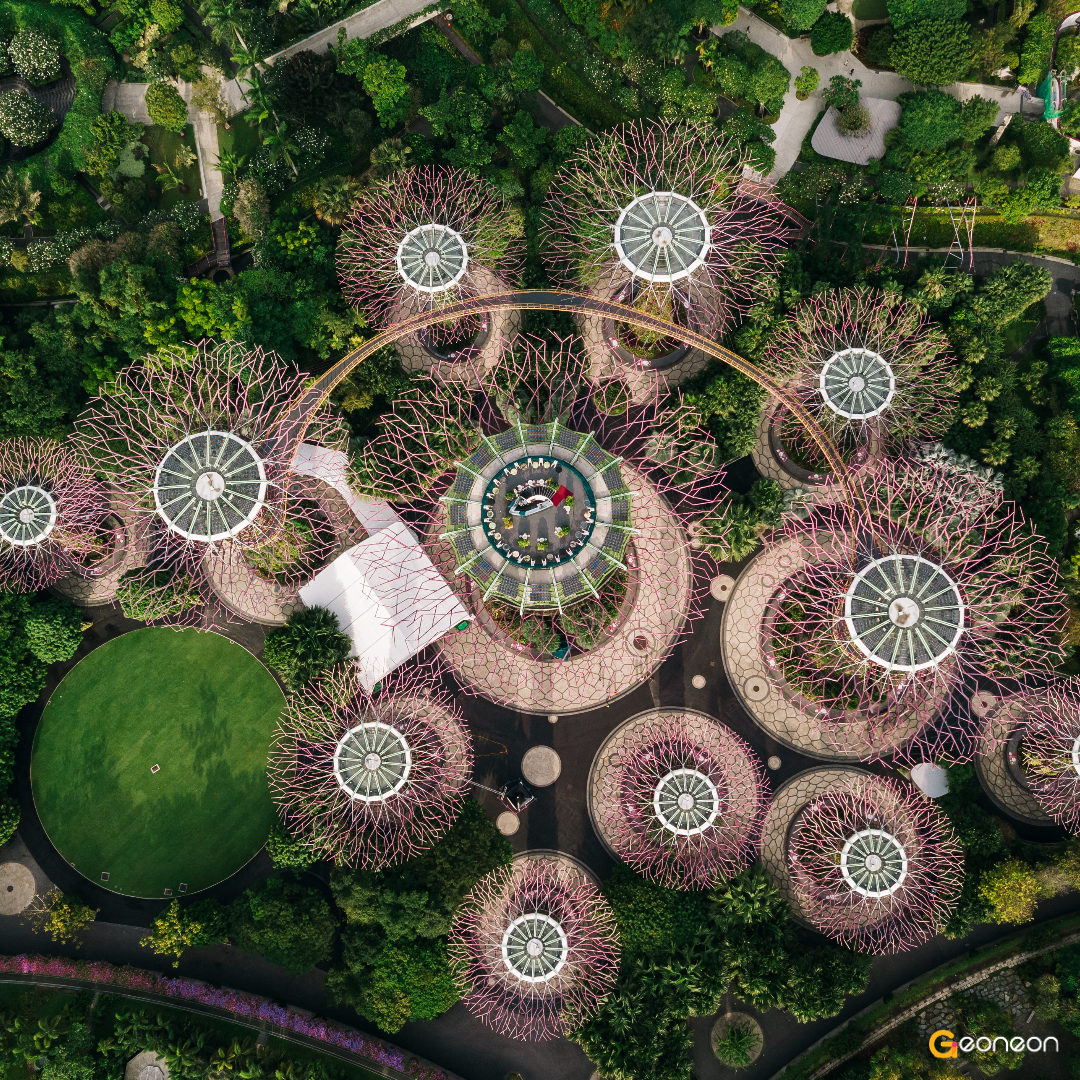Urban forests play a vital role in protecting communities from natural disasters such as heatwaves, floods, and landslides. As the world continues to urbanise, the importance of urban forests in protecting communities from natural disasters is becoming increasingly clear. Urban forests, which include trees, shrubs, and other vegetation in urban areas, provide a range of benefits, including cooler temperatures, improved air quality, and increased biodiversity. They provide shade and reduce heat island effects, absorb, and store water during heavy rainfall, and stabilise slopes and reduce soil erosion.
Urban planners have a key role in promoting the importance of urban forests in protecting communities from natural disasters by incorporating urban forests into their plans, educating communities about the benefits of urban forests, and developing policies and regulations that support the growth and maintenance of urban forests.
Heatwaves
Urban forests can help to protect communities from heatwaves by providing shade and reducing the urban heat island effect. The urban heat island effect is the phenomenon where urban areas are significantly warmer than surrounding rural areas due to the increased presence of heat-absorbing materials like asphalt, concrete, and buildings. Urban forests can help to mitigate this effect by providing shade, which can reduce surface and air temperatures. This can be especially important during heatwaves, when temperatures can be dangerously high.
Here are four examples of how urban forests have been used to protect populations from heatwaves:
- Chicago, USA: In the summer of 1995, Chicago experienced a heatwave that resulted in over seven hundred deaths. In response, the city began an initiative to increase the number of trees in the city, with the goal of reducing heat island effects and providing shade for residents. Today, Chicago has over 500,000 street trees, and the city's heat island effect has been reduced by an estimated 1-2 degrees Celsius.
- Sydney, Australia: Sydney experienced a severe heatwave in January 2018, with temperatures reaching as high as 47 degrees Celsius. In response, the city began an initiative to increase the number of trees in the city, with the goal of providing shade for residents and reducing heat island effects. Today, Sydney has over twenty million trees, and the city's heat island effect has been reduced by an estimated 2-3 degrees Celsius.
- Los Angeles, USA: In the summer of 2006, Los Angeles experienced a heatwave that resulted in over 140 deaths. In response, the city began an initiative to increase the number of trees in the city, with the goal of providing shade for residents and reducing heat island effects. Today, Los Angeles has over 1 million street trees, and the city's heat island effect has been reduced by an estimated 1-2 degrees Celsius.
- London, UK: In the summer of 2003, London experienced a heatwave that resulted in over seven hundred deaths. In response, the city began an initiative to increase the number of trees in the city, with the goal of providing shade for residents and reducing heat island effects. Today, London has over 8 million trees, and the city's heat island effect has been reduced by an estimated 2-3 degrees Celsius.
These examples illustrate how urban forests can play a critical role in protecting communities from heatwaves. By providing shade and reducing heat island effects, urban forests can help to keep temperatures cooler and reduce the risk of heat-related illnesses and deaths.
Floods
Urban forests can also help to protect communities from floods by reducing surface runoff and slowing the flow of water. Trees and other vegetation can absorb and store water, reducing the amount of water that runs off into streams and rivers. This can help to reduce the risk of flooding and protect communities from the impacts of floods.
Rotterdam (Netherlands) is a city that is particularly vulnerable to flooding, as it is located at the mouth of the Rhine-Meuse-Scheldt delta. Portland (USA) is a city that is located in an area that is prone to heavy rainfall and flooding. London (UK) is a city that is particularly vulnerable to flooding, as it is located on the Thames River. Singapore is a city-state that is particularly vulnerable to flooding, as it is located in an area that is prone to heavy rainfall. All these cities have developed extensive systems of green roofs, green walls, and urban forests that can absorb and store water during heavy rainfall. These systems have been shown to be effective in reducing the risk of flooding and protecting residents from the impacts of floods.
These examples illustrate how urban forests can play a critical role in protecting communities from floods. By absorbing and storing water during heavy rainfall, urban forests can help to reduce the risk of flooding and protect residents from the impacts of floods. Urban forests are an innovative and sustainable solution to reduce the impacts of floods and protect the population.

Gardens by the Bay in Singapore.
Landslides
Urban forests can also help to protect communities from landslides by stabilising slopes and reducing soil erosion. Trees and other vegetation can help to hold soil in place, reducing the risk of landslides. This is especially important in urban areas where development can increase the risk of landslides.
Rio de Janeiro (Brazil), Seattle (USA), Medellin (Colombia), and Kathmandu (Nepal) are examples of cities that are particularly vulnerable to landslides due to their steep topography and heavy rainfall. In response, these cities have developed extensive systems of urban forests that can help to stabilise slopes and reduce soil erosion. Th systems have been shown to be effective in reducing the risk of landslides and protecting residents from the impacts of landslides. Urban forests can be considered as an innovative and sustainable solution to reduce the impacts of landslides and protect the population.
The Role of Urban Planners
Urban planners have a key role in promoting the importance of urban forests in protecting communities from natural disasters. By incorporating urban forests into their plans, urban planners can help to ensure that urban areas are designed in a way that maximises the benefits of urban forests for disaster risk reduction. This can include identifying areas where urban forests can be planted or expanded, ensuring that new developments incorporate urban forests, and developing policies and regulations that support the growth and maintenance of urban forests. Urban planners can also work with communities to educate them about the benefits of urban forests and encourage their participation in urban forest management. By taking an initiative-taking approach, urban planners can help to ensure that urban areas are more resilient to natural disasters and better able to protect residents from the impacts of heatwaves, floods, landslides, and other natural hazards.
Geoneon's solutions can play a critical role in helping urban planners and decision-makers to monitor urban forests and mitigate disaster risks. Our solutions use innovative satellite technology to provide detailed information about the location, size, and health of urban forests. This information can be used to identify areas where urban forests are needed, to monitor the growth and health of existing urban forests, and to track changes in urban forests over time.
In addition, our solutions also provide data on social vulnerability, community resilience, and infrastructure criticality, which can help urban planners to identify communities that are most at risk from natural disasters, and to develop targeted disaster risk reduction strategies. By using Geoneon's solutions, urban planners can have a better understanding of the relationship between urban forests and disaster risks, and develop policies and plans that increase the resilience of urban areas and protect residents from the impacts of natural disasters.
In summary, Geoneon's solutions are a powerful tool that can help urban planners and decision-makers to monitor urban forests and mitigate disaster risks. It provides detailed information about urban forests, and data on social vulnerability, community resilience, and infrastructure criticality, which can help urban planners and decision-makers to develop targeted disaster risk reduction strategies and increase the resilience of urban areas.

